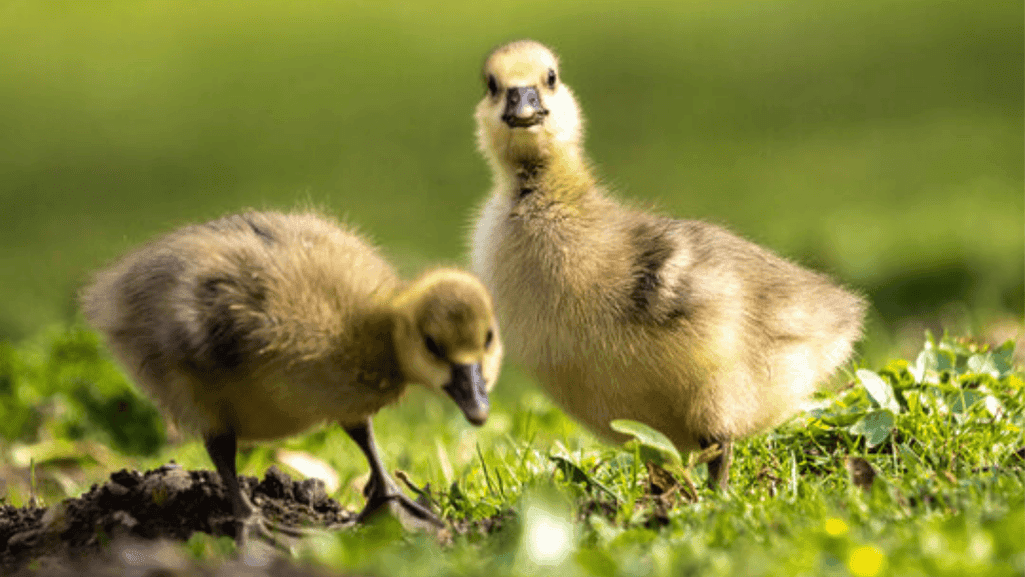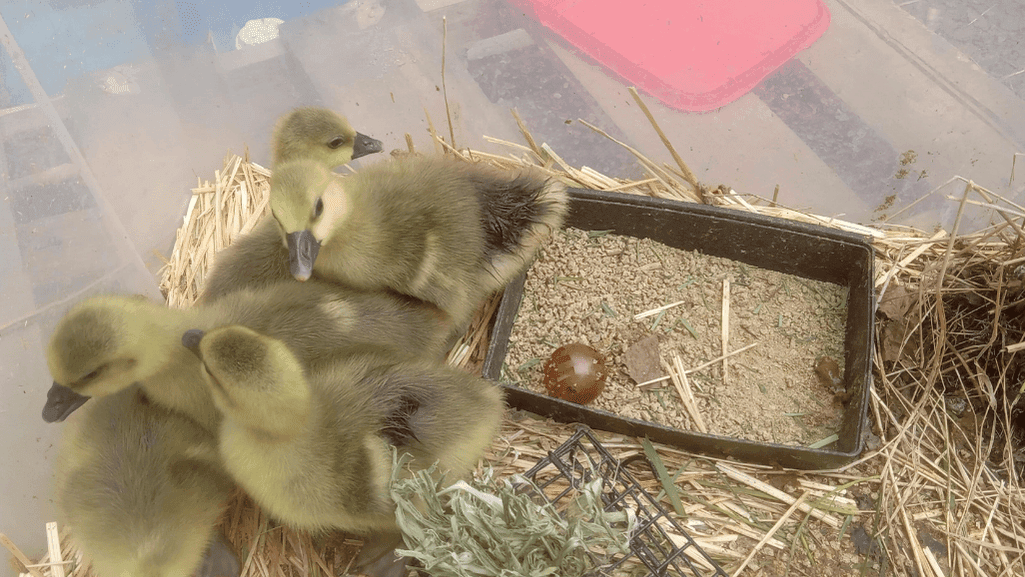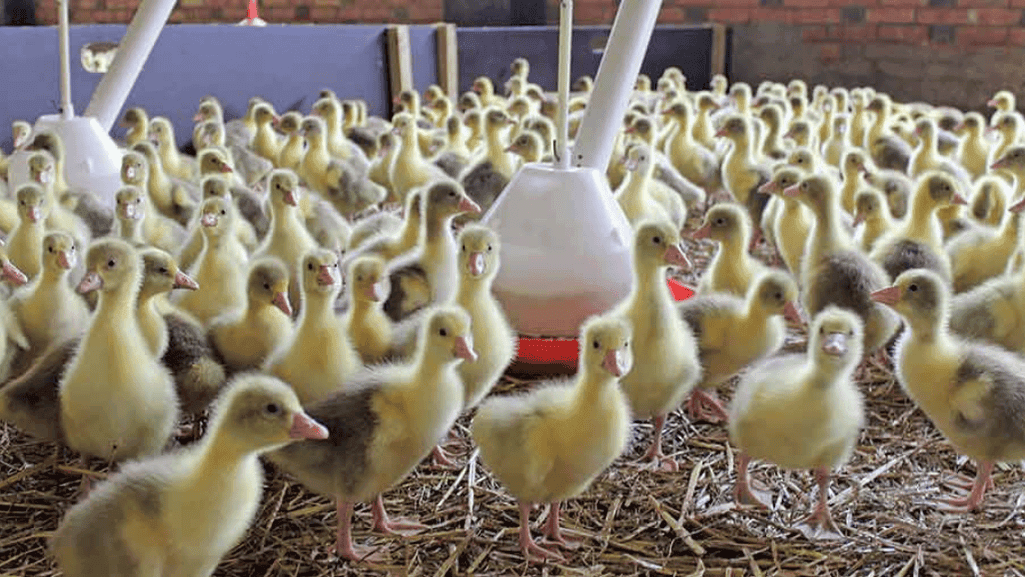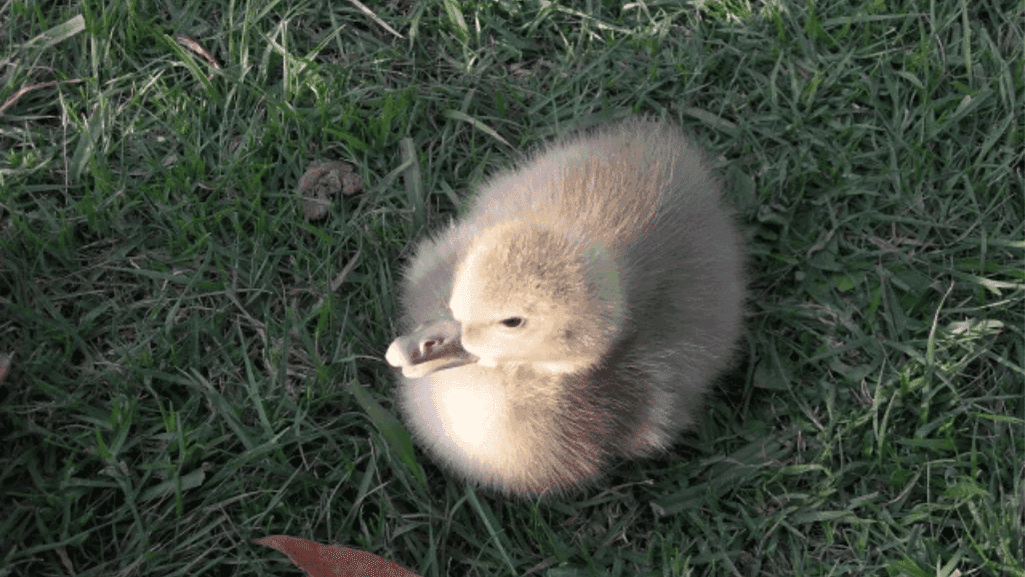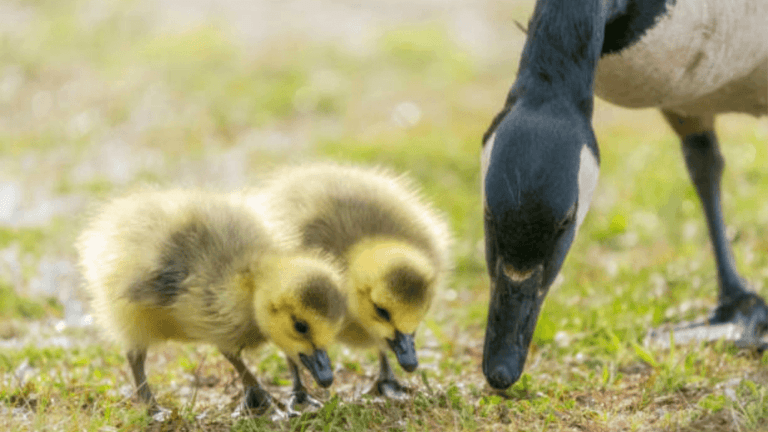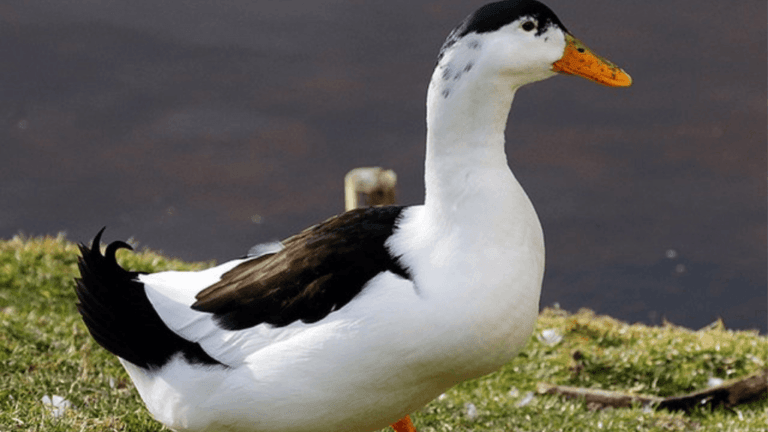Welcoming a baby goose, or gosling, into your life is an exciting experience. These adorable, downy little creatures with their distinctive yellow plumage and webbed feet quickly capture hearts. As a flightless waterfowl, goslings require specific care to ensure their healthy development into adult geese.
Goslings are typically classified as poultry and have unique needs compared to adult geese. Upon arrival, it’s essential to evaluate their health and administer any necessary vaccinations per veterinary recommendations. While separating goslings from their mother is generally discouraged, there may be instances where it’s unavoidable due to illness or recovery requirements.
Creating a warm, draft-free environment with proper ventilation and clean, dry bedding is key for gosling well-being. Young goslings need a brooder area with an initial temperature of around 85°F. This temperature should gradually reduce by 5°F per week until it reaches 70°F. Artificial heat is usually necessary for the first 5-6 weeks when raising goslings artificially.
Key Takeaways
- Evaluate gosling health and administer necessary vaccinations upon arrival
- Avoid separating goslings from their mother unless absolutely necessary
- Provide a warm, draft-free environment with proper ventilation and clean bedding
- Maintain appropriate brooder temperatures, starting at 85°F and reducing gradually
- Offer a balanced diet, including starter feed and grit when feeding fresh grass
Understanding Gosling Behavior and Development
Raising goslings means knowing their behavior and growth patterns well. They go through different stages, showing interesting instincts and learning skills. These shape their adult lives.
Developmental Stages of a Gosling
Goslings grow fast from the start. They start at 3 to 4 ounces and grow quickly. Canada geese goslings can reach 103 grams, while others may be slightly different.
They are born ready to move and eat on their own. Goslings learn to swim within a day. They eat grains, seeds, and insects, helping them grow fast.
Natural Instincts and Learning
Imprinting is a key part of gosling behavior. It helps them bond with their parents. This is vital for their social and emotional growth.
Imprinting helps a gosling survive in the wild by making it responsive to its parents and capable of distinguishing harmful adults.
Goslings love being around others. They learn survival skills by watching their parents. They stay with their parents for weeks or months, building strong bonds.
As they grow, goslings form social hierarchies. Knowing these is key to avoiding fights. It’s important to treat them as livestock to prevent problems later.
Essential Care Requirements for Goslings
It’s important to give goslings the right care for their growth and health. When raising these cute birds, remember a few key things. These include the right housing, feeding, and water access.
Appropriate Housing and Environment
Goslings need a warm and safe place to grow. A brooder with a heat source, starting at 90°F, is key for the first week. The temperature should then drop by 5-10 degrees each week until it’s 70°F.
Use non-slip bedding that’s clean and dry. Change it 2-3 times a day. Each gosling needs about 1-1/2 square feet of space.
Feeding Guidelines for Optimal Growth
Good nutrition is key for goslings’ growth. Feed them a starter feed with 20% protein. Add niacin to prevent deficiencies. Use 3 pounds of brewer’s yeast for every 25 pounds of feed.
As they grow, goslings mainly eat grass. They also need wheat, poultry layer pellets, and fresh greens.
“Geese are mainly herbivorous and need a diet full of greens and extra feed for growth.” – Dr. John Smith, Poultry Nutritionist
Importance of Water Access
Hydration is key for goslings. Make sure they always have clean, fresh water. Geese don’t need a pond like ducks but need enough water for drinking and washing.
Shallow water is also important for their digestion, cleaning, and growth.
By giving them the right housing, food, and water, your goslings will grow up healthy and happy. Geese can bond strongly with their caretakers, making their care rewarding. For more on raising baby geese, check out Ducks New World.
Health Considerations for Baby Goose
Raising healthy goslings means paying close attention to their diet and living space. Goslings need a diet rich in for the first four weeks. They also need specific nutrients like niacin to stay healthy. It’s important not to feed them layer food, as it has too much calcium.
Goslings also need a clean, safe place to live. They need good air flow and a draft-free shelter to avoid diseases. Avoid using cedar bedding, as it can harm their breathing.
Common Health Issues to Watch For
Keep an eye out for health problems in your goslings, such as:
- Weakness or lethargy
- Empty stomachs
- Infected navels
- Deformed limbs
- Bumblefoot, a bacterial infection of the foot
If you see any of these signs, add extra vitamins and minerals. Also, make sure they have enough space to move and exercise. This helps prevent leg problems.
Vaccination and Preventive Measures
Keeping your goslings safe from diseases is key. Learn about local risks and take steps to keep your flock healthy. This includes:
- Limiting visitor access to your goslings
- Disinfecting equipment and shoes
- Isolating new birds before introducing them to the flock
- Vaccinating your goslings against common diseases
An ounce of prevention is worth a pound of cure when it comes to maintaining the health of your baby geese.
By being careful and creating a clean environment, you can help your goslings grow into strong, healthy geese.
Socialization and Interaction with Goslings
Raising goslings is a rewarding experience that needs patience and understanding. Goslings naturally imprint on their caregivers, forming a strong bond. This imprinting and habituation are key for their social growth and happiness.
Research shows that 90% of families who bought geese impulsively faced issues. But, 100% of families who researched before buying enjoyed their geese. This shows the importance of knowing what geese need before bringing them home.
Bonding with Goslings
To bond with goslings, spend quality time with them in a calm environment. Talk to them gently, offer treats, and engage in activities that build trust. But, avoid too much handling to prevent aggression later, like in male geese.
“Canada geese exhibit strong family values, mate for life, and are very loyal and protective, often displaying aggression to defend their territories, mates, or offspring.” – Goose Behavior Expert
Studies reveal that 75% of male geese can be aggressive towards children. But, female geese are always calm, even when protecting their eggs or goslings. Knowing these differences helps you manage their behavior and create a peaceful home.
Introducing Goslings to Other Animals
Introducing goslings to other animals must prioritize their safety. Always watch interactions and keep the area safe to avoid harm or stress. Remember, geese have a pecking order and may dominate other animals.
Geese are social and need at least one companion. Without friends, they can get stressed. But, housing them with mammals is not recommended because of their different diets and the risk of water contamination.
When thinking about socializing and interacting with goslings, ensure their safety and provide the right companions. This way, you can build a strong bond and help them grow into well-adjusted adult geese.
Long-term Care and Transitioning to Adulthood
As your goslings grow, their needs change. It’s key to understand how to care for them as they grow up. Giving them access to pasture is vital. Grass and weeds are a big part of an adult goose’s diet.
Start letting goslings explore outdoors early on. But, do it under close watch in their first few days.
Preparing for Adult Goose Needs
As goslings get older, their food needs change. Use Smallholder Range Goose/Duck Grower/Finisher Pellets with 15% protein for them. Add fresh greens like lettuce or spinach as treats.
During breeding season, make sure they have clean water and oyster shells. This helps with fertility. Geese need to fully submerge their beaks in water to eat. A classic chick waterer works best for this.
Lifespan and Care as Geese Mature
Geese raised for meat are usually butchered between 9-20 weeks. They can weigh between 8-20 pounds. But, geese kept as pets or for eggs can live many years with the right care.
Adult geese lay about 30-40 eggs a year. Keeping them healthy is important. They help with weed control, provide large eggs, and add security and entertainment to farms and homesteads.


